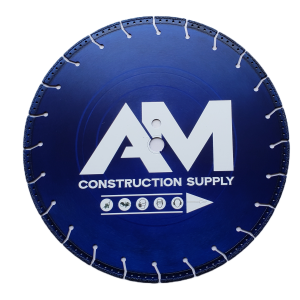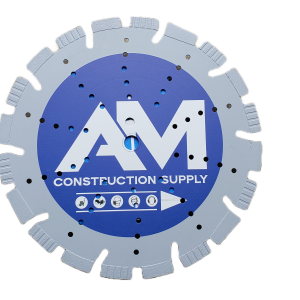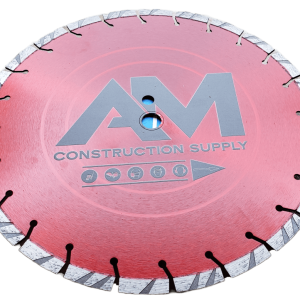Cutting concrete is a task that requires precision and expertise. Whether you are a professional contractor or a DIY enthusiast, it is important to use the right tools and follow the proper steps to ensure a successful outcome. One of the most important tools in cutting concrete is a diamond blade. In this article, we will cover the steps involved in cutting concrete with a diamond blade, as well as provide tips and tricks for choosing the right blade and using it safely and effectively.
I. Introduction
Concrete is a durable and versatile material that is used in a variety of construction projects, from buildings to bridges and roads. However, cutting concrete can be a challenging task that requires specialized equipment and techniques. Using a diamond blade is the best way to ensure a clean and precise cut, as diamond is one of the hardest materials on earth and can easily cut through concrete. Diamond blades come in a variety of types and sizes, and choosing the right one for your project is crucial to achieving the desired results.
II. Choosing the Right Diamond Blade
There are several different types of diamond blades available on the market, each with its own specific uses and benefits. Some of the most common types of diamond blades include:
- Segmented diamond blades: These blades are designed for general purpose cutting and are ideal for cutting through concrete, asphalt, and other tough materials.
- Continuous rim diamond blades: These blades have a smooth, continuous edge and are best suited for cutting through delicate materials such as glass and ceramic.
- Turbo diamond blades: These blades have a serrated edge that allows for faster cutting speeds and are best suited for cutting through thick concrete and other dense materials.
When choosing a diamond blade, it is important to consider several factors, such as the type of concrete, blade size, and cutting speed. Factors to consider include:
- The hardness of the concrete: Harder concrete requires a softer blade, while softer concrete requires a harder blade.
- Blade size: The size of the blade will depend on the thickness of the concrete you are cutting.
- Cutting speed: The speed at which you cut the concrete will affect the blade’s performance, and it is important to choose a blade that is appropriate for your cutting speed.
III. Preparing for the Job
Before you begin cutting concrete with a diamond blade, it is important to take the necessary safety precautions. This includes wearing personal protective equipment (PPE), such as safety goggles, gloves, and earplugs. You should also make sure the work area is properly prepared, which includes clearing the space and marking the cut line. This will help ensure a clean and precise cut.
IV. Using the Diamond Blade
Once you have chosen the right diamond blade and prepared the work area, it is time to begin cutting the concrete. The following steps should be followed:
- Mount the blade on the saw: Make sure the blade is properly mounted on the saw and tightened securely.
- Align the blade: Make sure the blade is properly aligned with the cut line.
- Make the cut: Begin cutting the concrete slowly and steadily, using a steady hand and taking breaks to prevent overheating.
- Check the blade regularly: Stop the saw and check the blade regularly to make sure it is still properly aligned and cutting smoothly.

V. After the Cut
After you have made the cut, it is important to take the proper steps to clean up the area and dispose of debris. This includes sweeping up any loose concrete and properly disposing of it in a designated area. It is also important to properly maintain both the diamond blade and the saw to ensure they continue to function properly.
VI. Conclusion
Cutting concrete with a diamond blade can be a challenging task, but by following the proper steps and using the right tools, it can be done safely and effectively. When choosing a diamond blade,





